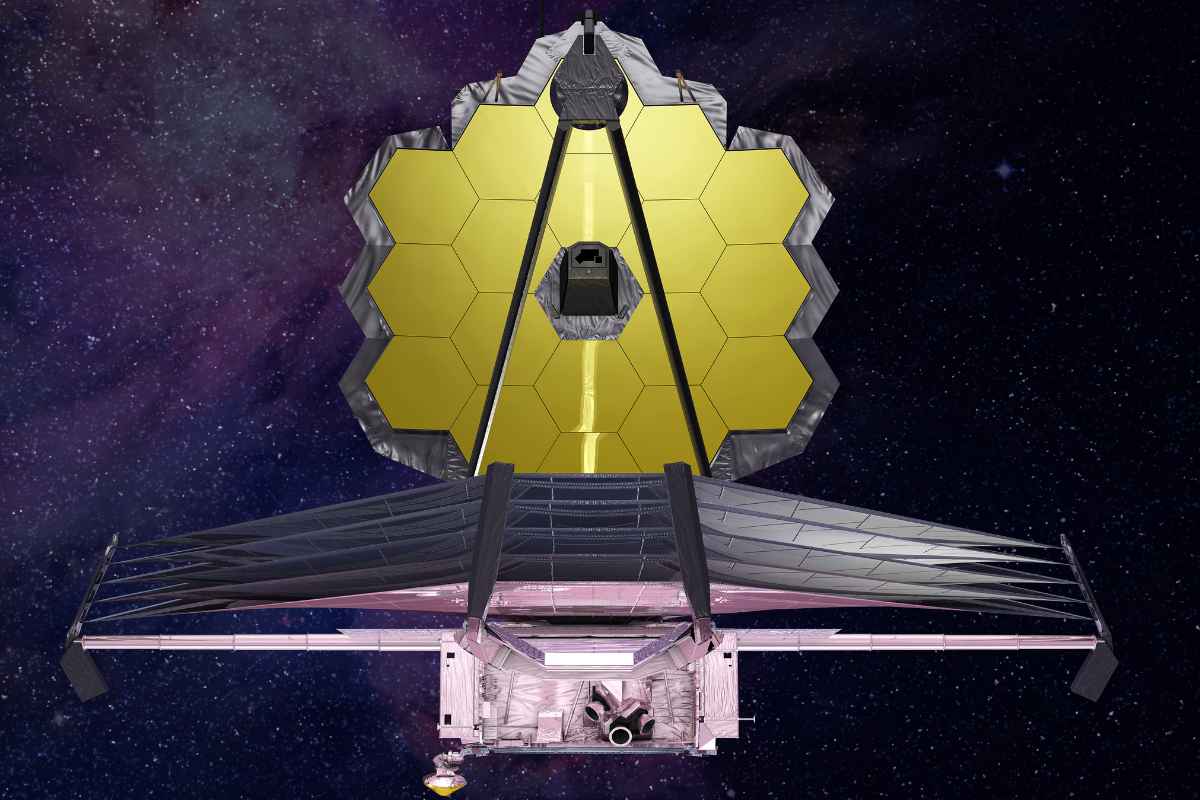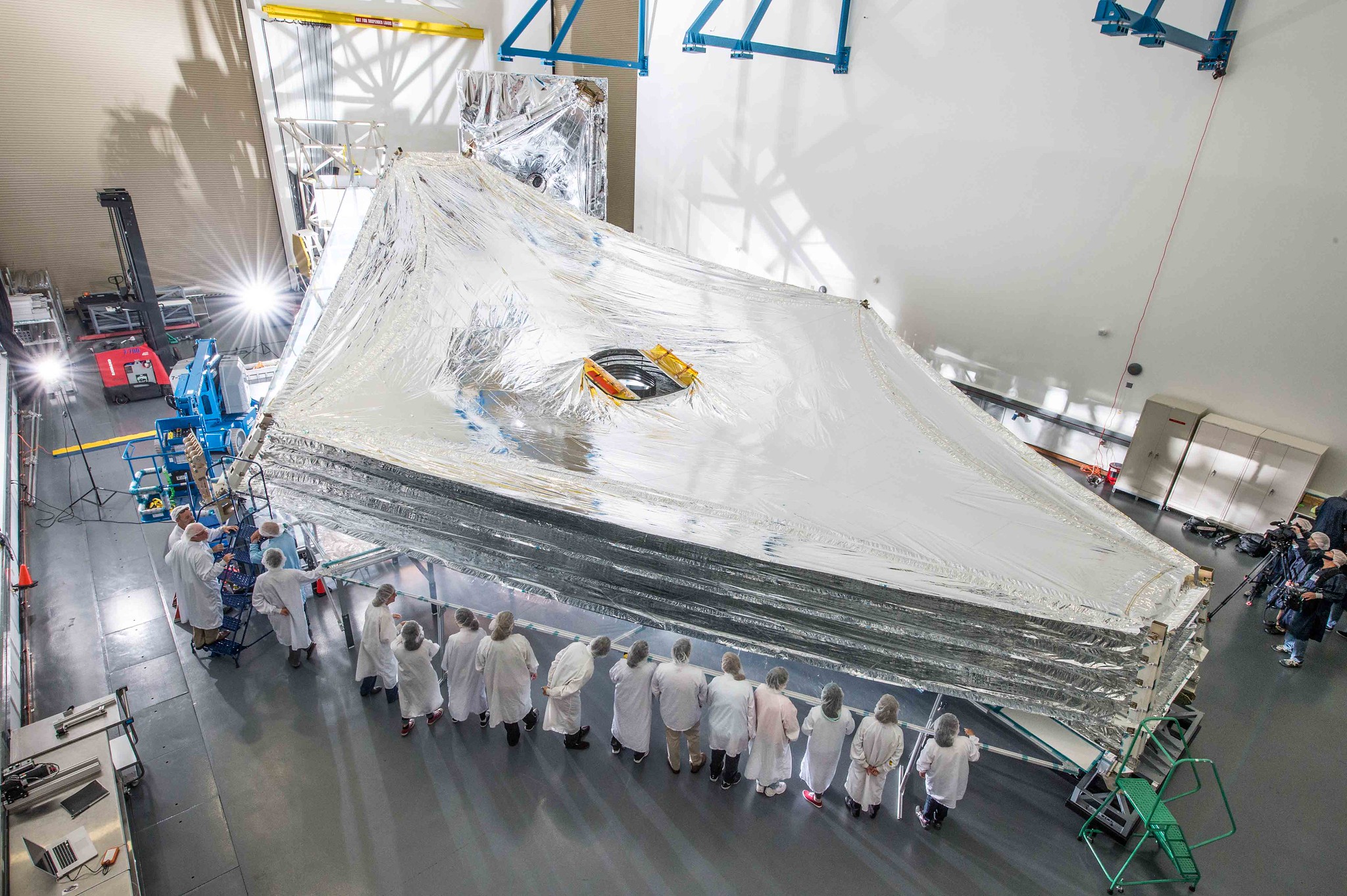

All five parts of the James Webb Space Telescope’s solar shield are now unfolded and pulled taut. It was one of the most challenging operations, as the solar shield is a crucial part of the telescope.
“Tightening the solar shield is very challenging because it requires complex interactions between the structure, the mechanisms used to tighten the solar shield, the cables and the membranes,” said James Cooper, principal responsible for the James Webb solar shield . “This was the most difficult phase for us to test on Earth, so it’s great that everything went so well today.”
On New Year’s Day, the Webb telescope popped out its solar shield. This sun shield is a kind of umbrella that protects the instruments and mirrors of the telescope from the heat of the sun. This keeps the highly sensitive infrared instruments cold and allows them to continue to function properly. The shield consists of five layers. By pulling the shield tight, space is created between the five layers and the shield works more effectively. The animation below shows how this works.
“Onions have layers. Ogres have layers.” And so does our sunshield!
Layer 1 of our 5-layer sunshield is now pulled taut, getting us even closer on our journey to #UnfoldTheUniverse. We have begun tensioning Layer 2: https://t.co/9YBPSe36OC pic.twitter.com/0LKHIZpKDS
— NASA Webb Telescope (@NASAWebb) January 3, 2022
Applause and happy faces: mission accomplished
The first three layers were pulled tight yesterday. This operation took just over 5.5 hours. Earlier this afternoon, NASA scientists began tightening the fourth and fifth layers. This could be followed live on YouTube. This work was completed at 5:59 PM Dutch time. In the video below, that’s about 2:24. Of course there was some clapping to celebrate this moment.
344 crucial actions
But we’re not there yet. In total, the James Webb telescope has to perform 344 crucial operations in space. If something small goes wrong, the mission may fail and we may never see beautiful images. The good news is that 75% of the 344 crucial actions have now been completed. So far, the James Webb Telescope has been performing above expectations, so we can look forward to its latest operations with confidence.

Here’s a trial version of the Sun Shield fully extended and stretched on Earth. A dress rehearsal for the process performed in space yesterday and today. Image: NASA/Chris Gunn.
And now?
The next task is to position the second mirror. This is the mirror that should reflect the light from the primary mirror to the instruments behind the primary mirror. Then the sides of the main mirror are unfolded. The sides each contain three of the eighteen mirror segments. Then these mirror segments have to be positioned so that they function as one main mirror. At the end of January, the telescope settles in Lagrange point 2: the point from which it must unravel the secrets of the cosmos. After this, the telescope cools down for a few months. The first images are not expected until around the summer. Exciting!
Source material:
“Webb Team Tensions Fifth Layer, Sunshield Fully Deployed
” – NASA
Image at the top of this article: NASA